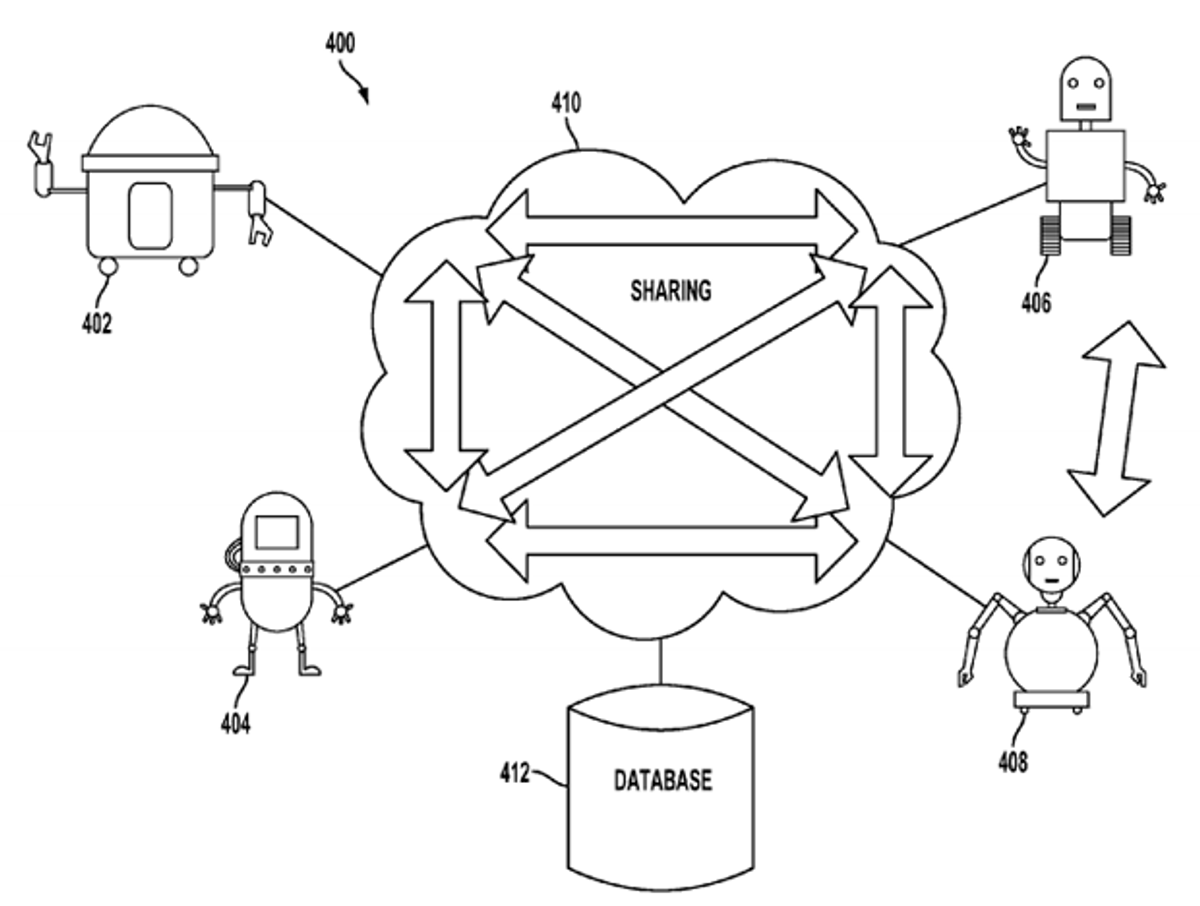As of March 31, 2015, Google owns a shiny new patent (8,996,429) outlining a robot that changes personalities based on circumstance and a wide variety of user information. The system stores useful data in the cloud where it can be accessed by other robots. Adorable robots, if we’re to go by Google’s “conceptual graphical representations” (above).
Using data that could include your current location, calendar events, and social media profiles, the robot will do its best to adopt the right personality at the right time in ostensibly any circumstance, from negotiating a car purchase on your behalf at the dealership to reminding you to clean your fridge (in your mother’s voice).
This patent illustrates that the personalization we’ve seen in services like Nest and Google Now is only the beginning, as far as Google is concerned. Privacy and data security issues aside, the coming marriage of “Internet of Things” devices with the existing data on our “human” Internet is geared to make social robots much more useful than your Wi-Fi-connected blender.
The robot in this patent can also modify its personality by inferring the user’s mood through methods like correlating the current weather to previous moods; if you tend to be grumpy when it rains, the robot may “perform uplifting tunes from ‘Annie’ to evoke positive reinforcement responses from the user.” (Ugh?) And this part is probably the most interesting — the robot may even use your diction and sentence structures from email, texts, or phone calls to estimate your emotional state and respond accordingly.
In one example from the patent, the robot goes so far as to assemble an entire personality on request. “Be mom” could prompt it to search your phone and computer for information about “mom,” determining her voice from recordings and displaying her photograph. Way to make cool technology sound creepy, Google. And it gets even better: At a symposium last Thursday, Sebastian Thrun, founder of the Google X laboratory, speculated “perhaps we can get to the point where we can outsource our own personal experiences entirely into a computer — and possibly our own personality.”
Robots that change their personalities based on collected information like this would certainly be neat. But as far as I know, the patent only covers the general idea, as opposed to a specific implementation that Google has developed. I’m not a fan of this type of patent because it doesn’t protect a brilliant technical solution or large investment. Instead, it covers the mere concept of combining existing platforms and data to imbue robots with changeable personalities.
The idea behind the patent, originally filed in 2012, relies heavily on the notion of cloud robotics. Cloud robotics is a relatively new concept (and one coined by Google, no less) but it's not 2012 new. And it’s hard to imagine anyone in the field of social robotics who hasn’t entertained the concept of using cloud robotics in exactly this way. Patents aren’t supposed to reward the first company clever enough to file the paperwork on a peanut butter and jelly sandwich. They’re supposed to support innovations that are non-obvious to a person skilled in the art.
Patents are also meant to protect specific, useful technologies that are detailed enough to implement, rather than a method idea or vague future vision. Recent Supreme Court decisions have made the U.S. patent office less friendly towards similar claims, and for the sake of social robotics and other nascent industries, I hope this trend will continue. When your idea relies on broad methods instead of offering a practical technical solution to a problem, you’re not contributing to innovation, you’re contributing to a patent minefield.
Impeding others for the sake of market advantage is one thing, but this patent doesn’t even mean that Google themselves are actively developing the technology. Back in 2012, Google wasn’t showing much interest in social robots, and they still seem to be concentrating on industrial robotics. Unfortunately, this patent may say less about Google’s focus and more about them adding whatever IP they can get to their arsenal.
Hate the game, not the player, but this patent is unnecessary. When companies like Google lock down this type of early conceptual idea, it prevents others from working on the actual technical solutions. And at this stage in the space, we need more than one company innovating. Competition will drive better implementations of personalized robots, and a vibrant market could even encourage better privacy and data security solutions.
With Jibo and other social robots coming soon to a household near you, social cloud robotics is on the horizon one way or another, and we wouldn’t count Google out just yet. Their data collection and user preference algorithms make them uniquely situated to tackle this idea.
And creepiness aside, I’m curious to see Google try to build a robot version of your mom.
Dr. Kate Darling researches robot ethics and intellectual property at the MIT Media Lab. She’s a Fellow at the Harvard Berkman Center for Internet and Society and the Yale Information Society Project. Follow her on Twitter @grok_
Kate Darling is an IP research specialist at the MIT Media Lab. This article is based on a paper presented at the We Robot 2012 conference. Contact her at kdarling@mit.edu or follow her on Twitter.




